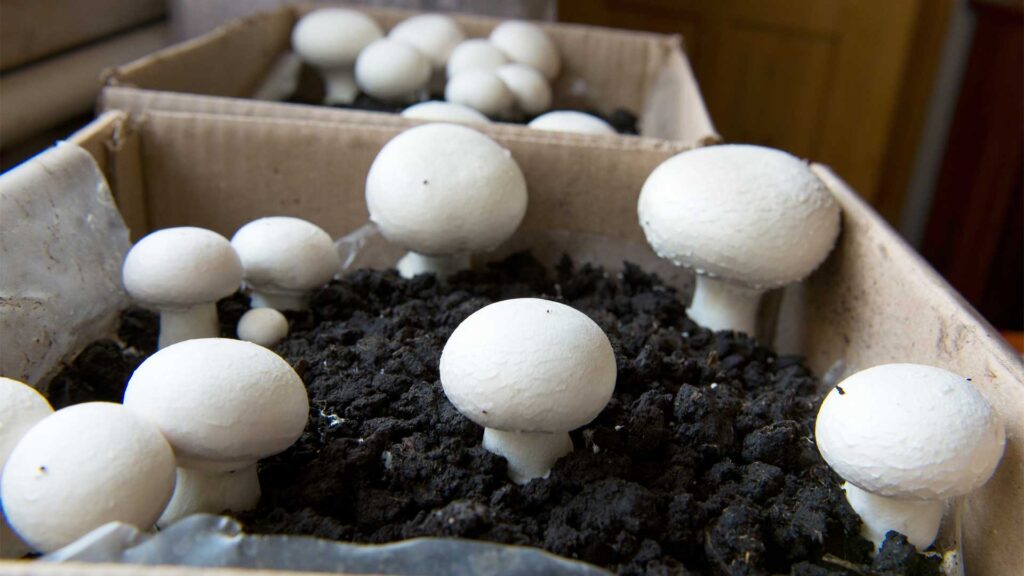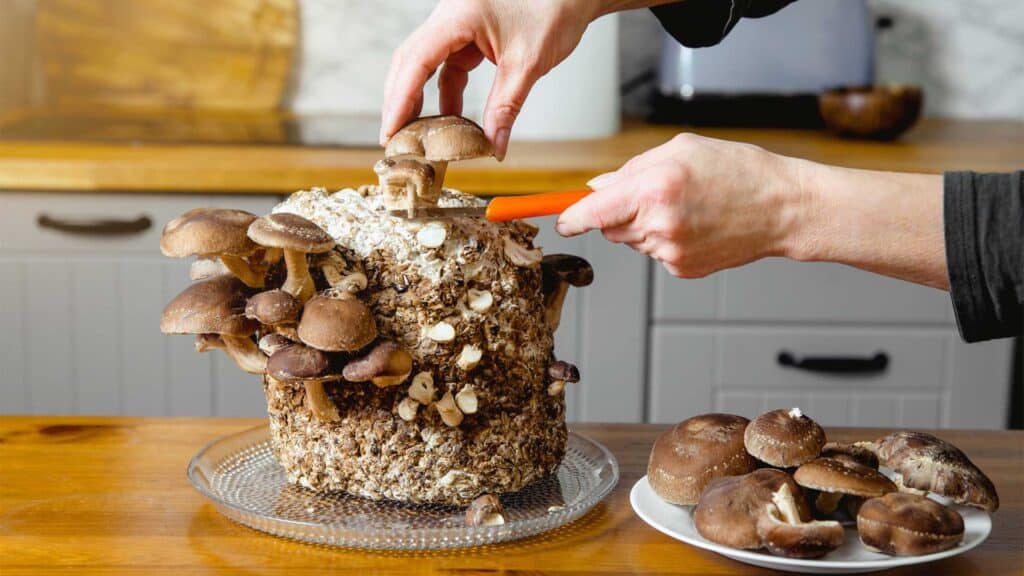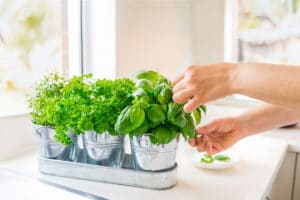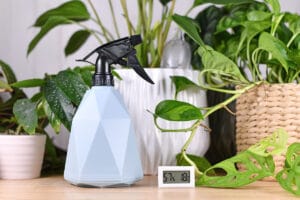Mushrooms are so delicious! Whether in a recipe or enjoyed with a dip, mushrooms are not only tasty and versatile but also, in some cases, very easy to grow at home. With rising food prices, more families are choosing to cut back on mushroom consumption or wait for sales. That’s no longer necessary, as you’ll now know how to grow them at home for a fraction of the price.
Where to grow mushrooms?
The advantage of growing mushrooms at home is that they don’t need direct light. A dark and humid place, such as a basement, garage, or even a cupboard, can be ideal. To grow mushrooms, it’s important to maintain a constant humidity of around 70 to 80% and a temperature between 15 and 25 °C, depending on the type of mushroom.

You can use bins or perforated plastic bags to create a humid environment. If you’re using bins, make sure they are perforated to allow air circulation. Misters or humidifiers may be necessary to maintain humidity levels. In any case, ensure that air circulates sufficiently to prevent mold.
For good air circulation, choose a space that allows for air renewal, like a basement. If you opt to grow your mushrooms in a cupboard or wardrobe, make sure to leave the door slightly ajar. Place your growing bags on shelves to allow air to circulate around them. If you’re growing mushrooms in a closed container like a plastic box, it’s advisable to open the container regularly, once or twice a day, to let in fresh air. This helps limit CO2 buildup, which could slow mushroom growth or encourage mold.
Watch for signs of mold, often visible as black, green, or white spots on the substrate. To avoid this, regularly inspect your crops. If any mold appears, remove it immediately before it spreads.
What to use to grow mushrooms
When you’re ready to start growing mushrooms, begin by deciding which type of mushroom you want to cultivate. The type of mushroom will determine what substrate to use.
For example, oyster mushrooms thrive on wood-based substrates like sawdust, wood chips, and even straw. Button mushrooms prefer compost or manure. For beginners, ready-to-use growing kits are available at garden centers.
Next, choose the mycelium or spores based on the type of mushroom. Mycelium is the equivalent of roots for mushrooms; it’s the living part that colonizes the substrate. Mycelium can be purchased in the form of inoculated grains or pre-inoculated blocks. Spores, on the other hand, are like seeds for mushrooms. However, growing from spores is more technical and takes more time for them to develop into mycelium. A garden center advisor can help you understand the various products and determine which ones suit you best.
Type of mushrooms to grow at home
Button mushroom
Compost or manure
Difficulty level :
Easy to grow
Oyster mushroom
Sawdust or coffee grounds
Difficulty level :
Perfect for beginners
Shiitake mushroom
Hardwood logs (maple, oak)
Difficulty level :
More demanding
Enoki Mushroom
In jars or sawdust
Difficulty level :
Requires a bit more care
Perfect kit for beginners

The advantage of ready-to-use kits, aside from avoiding headaches, is that the substrate is already colonized with mycelium. Some kits are specifically chosen to offer robust strains suited for home conditions. When purchasing spores or mycelium, it’s essential to check the recommended growing conditions for each strain. Choose your mycelium based on your taste preferences and the environmental conditions where you will grow them.
By growing mushrooms at home, you ensure you consume fresh mushrooms, often more flavorful and nutritious than those bought in stores. It’s also an eco-friendly action, as cultivating at home reduces the carbon footprint associated with transport and packaging. Additionally, mushrooms can be grown on recycled materials like coffee grounds or garden waste.
Growing your own varieties, especially the more expensive ones like shiitake and oyster, can lead to long-term savings, especially if you reuse substrates or grow on logs.
Growing your own mushrooms is also an educational and fun activity to do with kids. Come visit us to discover the wonderful world of mushrooms!






